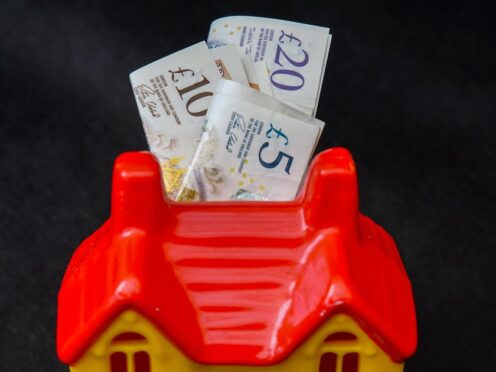
Some households will see boosts to their income or have new savings options to choose from as April gets under way.
Many will be grappling with April price hikes to their regular bills, but with a new tax year starting from April 6, some changes during the month may ease part of the strain.
Around 170,000 families will be taken out of paying a tax charge.

The Government will increase the threshold at which the high income child benefit charge kicks in, from £50,000 to £60,000, from April.
The charge had been triggered when one parent in a household claiming child benefit has taxable income of £50,000 or more – but the threshold has been criticised for falling unfairly on the shoulders of single parents, as it is based on the income of the highest earner.
The rate at which the fee is charged will also be halved from 1% of the child benefit payment for every additional £100 earned above the threshold, to 1% for every £200.
This means that child benefit will not be withdrawn in full until a parent is earning £80,000 or more.
Overall, the Government has estimated that 485,000 families will gain an average of £1,260 towards the costs of raising their children in 2024/25 and that 170,000 families will be taken out of paying the tax charge.
There could also be more choice for savers, with the launch of British Savings Bonds expected soon.
Delivered through Treasury-backed National Savings and Investments (NS&I), they are expected to launch in early April.
The products will offer savers a guaranteed return over three years for investments between £500 and £1 million.
As the Chancellor announced today, British Savings Bonds will be available from NS&I in early April.
More information here ⬇️https://t.co/CIZnf7YSpZ
— nsandi (@nsandi) March 6, 2024
One finance expert suggested the attractiveness of the product will depend on the rate.
Sarah Coles, head of personal finance at Hargreaves Lansdown, said: “Unless this comes with a decent rate, there’s every chance this Bond is a George Lazenby. You can give him a Union Jack parachute, but he’s still unlikely to fly.”
Tax-efficient Isas will also become more flexible.
Savers will be able to open more than one Isa of the same type each year, in a move which could help people to shift their money around and make the most of the top-paying accounts.
The Government will allow multiple subscriptions to Isas of the same type every year.
Pensioners will also receive an income boost.
Under the triple-lock guarantee, the state pension will increase by 8.5%, to reach £221.20 a week for the full new state pension, and £169.50 a week for the full, old basic state pension.
National insurance (NI) will be cut in April.
The main rate of employee national insurance will be cut from 10% to 8% from April 6.
When combined with a cut previously announced in the autumn statement, this will save the average worker on £35,400 more than £900 a year, the Government has said.
The main rate of self-employed national insurance will also be trimmed down. The main rate of Class 4 NI contributions for the self-employed will be reduced to 6%. When combined with the abolition of the requirement to pay Class 2, this is expected to save a self-employed worker earning £28,000 around £650 a year.
But some thresholds may act as a “stealth tax” and make people feel worse off just by being left unchanged.
Frozen income tax bands pull people into higher brackets over time as their pay increases.
The standard personal allowance is £12,570, which is the amount of income that someone does not have to pay tax on.
Ms Coles said: “Over time, as the frozen tax thresholds bite, more higher earners will suffer.”
Alice Haine, personal finance analyst at investment platform Bestinvest, suggested: “If you fear a pay rise or bonus will tip your income into a higher tax band, it could be worth asking your employer about ‘salary sacrifice’. Some employers will let their staff reduce their salary or bonus payments in lieu of increased pension contributions.”
Ms Haine added: “There is also no increase to the personal savings allowance, which has remained the same since 2016, putting people at risk of paying tax on the interest they earn on their nest eggs.”
Basic rate taxpayers can earn up to £1,000 in savings interest before paying tax, under the personal savings allowance.
But recent rises in savings rates may push some people into paying tax.
This could make Isas, which are ringfenced from tax, a more attractive option for some savers.
From April 1 2024, workers aged 21 and over will be entitled to the National Living Wage.
From April, the main minimum wage rate will rise to £11.44 and be extended to those aged 21 and 22.
It has previously been £10.42 for those aged 23 and over and £10.18 for workers aged 21 and 22.
Kate Smith, head of pensions at Aegon, said the wage increase “is good news for workers on the National Living Wage for the very obvious reason that it boosts pay packets, but the hidden benefit is that it will also have a positive impact on workplace pension contributions”.

Enjoy the convenience of having The Sunday Post delivered as a digital ePaper straight to your smartphone, tablet or computer.
Subscribe for only £5.49 a month and enjoy all the benefits of the printed paper as a digital replica.
Subscribe